Key Takeaway
Grades 2-5 implementation of blended learning in an urban district school serving a highly diverse student population, a large majority of which qualify for free and reduced lunch.
Core strategies include multi-age learning classrooms, weekly learning cycles, flexible learning spaces in a traditional school building, the use of data tracker sheets and Learner Profiles, full inclusion of learners with special education needs in general education classrooms, a focus on social emotional growth through peace circles.
Interesting or unique highlights to check out: how they establish a trust system that enables flexible work spaces and their approach to student-led conferences.
Experience Overview
NOTE: The following school profile is a snapshot of a moment in time, therefore some school structures, models, and strategies may have changed since publication.
Lovett Elementary School is a district school serving students in grades K-8 in Chicago, Illinois. The school serves approximately 350 students (2017), over 90% of whom qualify for free and reduced lunch. Lovett uses blended learning to enable personalized learning plans, greater earned student choice-making, and multi-grade, differentiated student groupings. Lovett is developing a school-wide approach to learning anchored on three core goals:
Empowered Learners: Increasing ownership for setting and working towards goals as a means for increasing investment in the task.
Highly Collaborative School Community: Providing opportunity and structures for teachers to be able to collaborate.
Responsive Instruction: Designing a differentiated curriculum so all kids receive what they need at their level and at a pace that allows them to learn.
Dr. LeViis Haney, Lovett’s principal, decided to transition to blended learning as a way to meet the needs of students at various levels within its classrooms. This transition started in 2014 when Lovett participated in Chicago Public Education Fund’s Summer Design Program. After the program, Lovett decided to test the feasibility of larger school redesign through a simpler station-rotation blended learning software pilot. Based on early success, Lovett partnered with LEAP Innovations the following year to push personalized learning further, becoming part of LEAP’s Breakthrough Schools Network. LEAP provided these schools with a variety of workshops on foundational elements such as visioning, curriculum needs, schedules, and professional development focused on learning science and personalization practices. It also included monthly on-site coaching of teachers and robust research on the effectiveness of the pilot through Personalized Learning Teacher & Student Surveys, classroom observations, and data analysis.
Through these workshops, Lovett gained the necessary tools to plan and implement the next phase of model development. In 2015, Lovett was selected to take part in LEAP’s Breakthrough Schools program as a planning grantee. The school focused its 2015-2016 efforts on boosting student agency through the creation of “Next Gen Classrooms” for a subset of their students, which combined earlier blended learning with LEAP Learner Led strategies focusing on student input and agency. With year-round support from LEAP, Lovett’s pilots proved successful in terms of implementation and student outcomes. As a result, they decided to expand their work beyond student agency, identifying new ways to adapt their learning resources to better meet student needs based on the LEAP Learning Framework for personalized learning as well as growing the work to more grades in the school. In 2016, Lovett was selected as one of seven Breakthrough Schools to receive an additional $280,000 in implementation grant funds, which has provided them with implementation support and the resources needed to create a five year strategic plan.
This profile explains the school model across all content areas for grades two through five.
Learning In Action
Students at Lovett have continual access to flexible learning resources tailored to their needs. Working in what Lovett terms “Next Gen Classrooms,” they participate in age-based homerooms but transition to “learning pods” for core content during the school day. Pods are grouped within grade ranges, combining 2nd and 3rd grade, as well as 4th and 5th. Within pods, teachers offer low, medium, and high classes, which allow them to be learner focused and differentiate content difficulty based on skill level. Students move between these classes based on their RIT scores from the NWEA exam, which they take several times during the year. These class assignments are dynamic as they vary throughout the year and by skill area, and a student may be in the low class for a reading fluency unit and the high class for vocabulary.
Students in the younger pod are often grouped in stations, rotating through time with teachers, collaborative work, and online programs to ensure their needs are met. Students in the older pod are provided with more individualized resources and learner led choice over how to move through their learning progression.
Learning pods create the structure and flexibility to allow teachers to further personalize instruction within each class. Starting at the very beginning of the year, students co-create their own Learner Profiles to help teachers be learner focused and better understand their learners’ needs and interests. Students and teachers conference every other week to reflect as well as enable profiles to evolve.
Lovett students are taught to expect more independence as their learning progresses in each skill area, as concepts are often introduced by the teacher, practiced by the class, then mastered by the student. Content and resources are modified for the student throughout the week based on how well they are performing each day. Students in all grades are able to choose whom they work with and where they work best, which is enabled by Lovett’s creative use of flexible furniture. To support this choice-making, students explore different work styles and are encouraged to think about what successful learning means to them.
If you are interested in seeing more from Lovett, come visit a few classrooms virtually and see the strategies in action with some extended footage!
Teaching In Action
Teachers often start the week by introducing a new skill across the class in a more structured format, then provide students more autonomy over their learning path as the week progresses.
Teachers encourage and create learner led structures to support students to have ownership over their learning by providing them with a great deal of choice, including whom they work with and where they work. To ensure students are making good learning choices, teachers assess progress through data tracker sheets throughout the week. Frequent student-led conferences and informal check-ins also provide teachers with opportunities to assess progress, continue to learn more about each student, and discuss and promote a culture of perseverance. Teachers are able to adjust learning resources to meet students’ needs as they shift (e.g. online programs, intervention, groupings).
In order to deliver a personalized learning experience for their students, Lovett teachers focus heavily on data analysis and collaboration. Teachers share access to student data and progress, check-in with each other throughout the day, and have structured planning time on Fridays. At the end of each week, teachers assess progress and determine whether the class is ready to move on to the next skill. They also determine students who are moving ahead and falling behind and ensure their learning resources are modified as well. Constant collaboration enables Lovett teachers to ensure student needs are being met. Teachers often flexibly “divide and conquer” based on individual student needs and preferences, as certain teachers may be able to better support specific students depending on need.
Strategies
Students at Lovett Elementary School are grouped into multi-age classrooms, with weekly cycles of instruction that become more personalized as a week progresses. Given Chicago Public Schools’ funding and staffing parameters, Lovett operates within a fairly traditional staffing model but aims to use human resources as flexibly as possible to personalize learning for students. Educators are not assigned to a single grade but usually operate within grade bands, teaching content across grade levels.
Technology is fully integrated throughout the day. Lovett primarily uses a mix of station rotation and individual rotation models for blended learning. The station rotation is highly prominent and is used across learning pods. Students in older pods have more flexibility – they are given assignments through Google Classroom but choose when, where, in which order, as well as with whom they want to work. To support this, the school has 1:1 Chromebooks as well as a number of iPads available. The school utilizes online learning resources such as Myon, Lexia, ST Math, Mastery Connect, and more.
Lovett created a mastery-based system in which students are able to progress through Common Core State Standards at their own pace and own level. Some students may also have individual learning progressions that are modified to help students backfill any missing skills before mastering standards. NWEA MAP scores help identify each student’s strengths and weaknesses and help teachers place students within the right-leveled group. Teachers have data-driven conversations informally throughout the week to see if any adjustments need to be made. Students play a large role in the data collection process, often grading their own work before turning it in and using data tracking sheets throughout the day.
In addition to differentiating instruction through multi-age and skill-level classes, Lovett teachers focus on getting to know their students deeply and harnessing that knowledge to develop guided choices. Teachers flex resources considerably to offer greater choice and differentiation, but emphasize the importance of clear structures to support this process. By providing students voice and choice in these areas, teachers are able to build better relationships with their students and better understand their unique learning needs.
Targeted and Relevant
Actively Engaging
Growth Oriented
Conditions for Success
Educators seeking to try out this model with their students should keep the following key conditions for the work in mind:
- Staffing: Lovett works under a standard staffing model within Chicago Public Schools, which has been developed in partnership with the Chicago Teachers Union. However, in order to best meet the needs of students, Lovett has modified the flexible components of its staffing model.
- Teacher Support: Teachers are given an hour each day for individual planning time as well as team planning each Friday.
- Devices: This model requires that every student has access to a learning device at all times. Maintenance of devices is provided by a third party vendor.
- Content: Lovett relies on relatively low cost and free digital resources - all of which could be adopted by other schools. The availability of these resources is a must to allow students to work at their own pace.
- Broadband/Connectivity: Students must have adequate connectivity at all times.
- Finances: Lovett is able to provide blended learning instruction to every student throughout the school day on the standard budget of a Chicago school. While blended learning is currently financially sustainable, Lovett did rely on implementation and planning grants to help with initial piloting and scaling, most of which was spent on professional development and teacher release time to design the model.
- Communications: After changing the instructional model, Lovett also had to change the way they talked about teaching and learning to students, parents, and the community.
Replication and Scale
Lovett is in its second year of implementing blended and personalized instruction across the entire elementary school in all content areas and grade levels. Being in a region where other schools have begun to utilize blended approaches has supported this work, Lovett’s urgency to implement was influenced by observing work underway at CICS West Belden. Lovett has also benefited from the support of LEAP Innovations, which has worked with dozens of schools to help them implement blended and personalized learning. Lovett’s budget is standard for an elementary school within Chicago, though they use staff flexibly to create more small group and individual instructional opportunities. Key enablers to their model, such as flexible use of time and space, are done within a traditional school building and schedule.
After the initial year of piloting (2015- 2016), Lovett saw tremendous gains in NWEA MAP measures. Lovett students ranked in the 98th percentile in both math and reading growth, up from 34th and 73rd (respectively) in the 2012-2013 school year. These students also scored in the 98th percentile for both math and reading. According to the school's 2016 Chicago Public Schools' progress report, this growth exceeded district averages.
In a survey of teachers and students, the school scored at the highest levels for ambitious instruction, collaborative teachers, and family involvement. All three of these areas have improved significantly since the 2012-2013 school year. Further, out-of-school suspensions are on the decline and are far below that of the district average (1.7 versus 8.1 per 100 students).
Explore More School Models

ASU Prep Digital is a virtual, public K-12 charter school that is part of the...
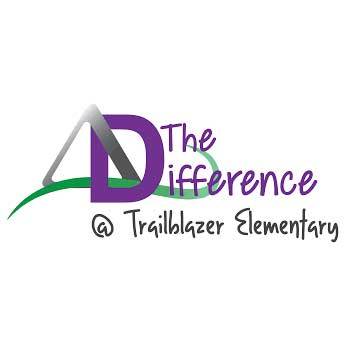
Trailblazer Elementary School serves K-5 students in Colorado Springs School...


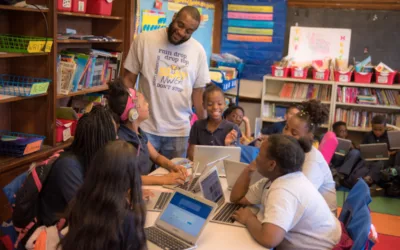

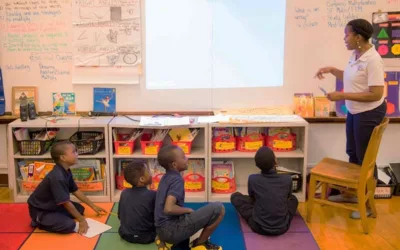
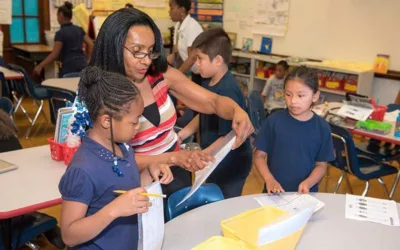
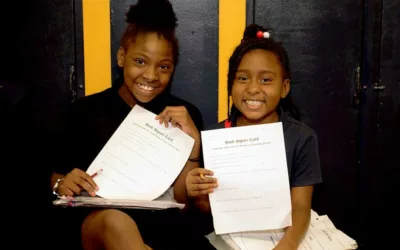

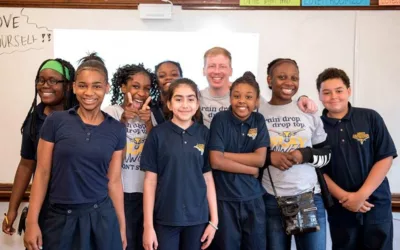
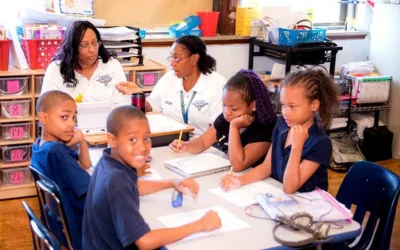
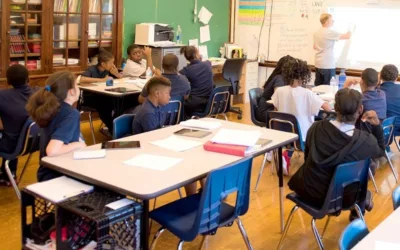
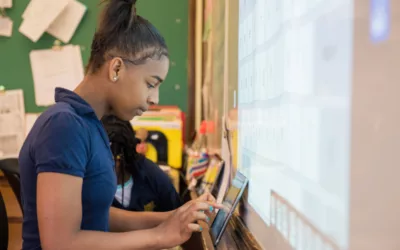


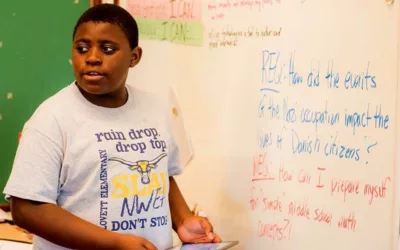
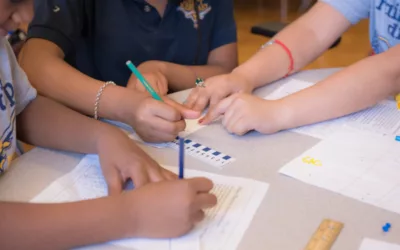
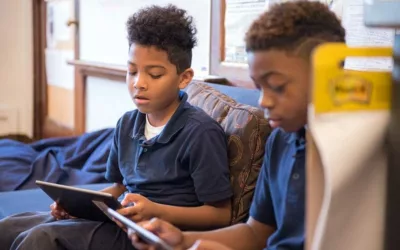
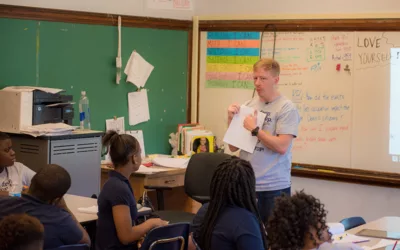

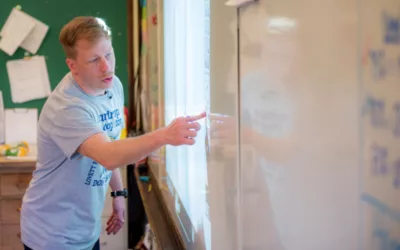

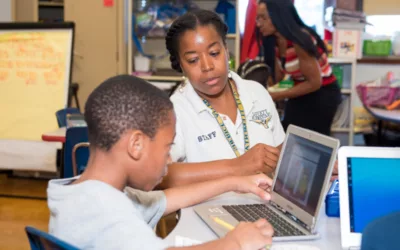
Socially Connected
Authentic inquiry and application, Choice and agency, Peer learning and collaboration
Lovett's Flex Fridays
Addressing student learning needs outside core content areas
Choice and agency, Peer learning and collaboration, Progress monitoring and reporting
Student Choice of Learning Partners
Enabling students to determine how they work best and trusting the choice they make
Choice and agency, Goal-setting and planning, Progress monitoring and reporting, Relationship and trust building
Student-led Conferences
Empowering students to advocate for their learning during teacher conferences
Culturally relevant and sustaining, Peer learning and collaboration, Relationship and trust building
Peace Circles
Providing students with a safe place to work on social-emotional learning
Goal-setting and planning, Peer learning and collaboration
Accountability Partners
Student meetings with a partner to help them meet learning goals
Differentiated pathways and materials, Peer learning and collaboration
Full Inclusion of Students with Learning Disabilities
Providing special education resources to students with additional need in general education classrooms